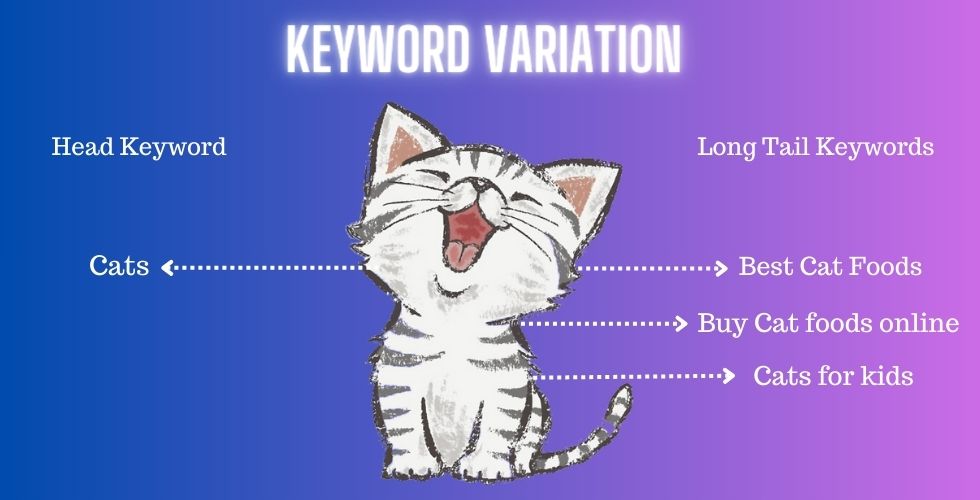Keywords are the cornerstone of any effective SEO strategy. But within your keyword research, it’s important to understand the difference between long tail keywords and fat head keywords. In order to balance your efforts for the best results. In this comprehensive guide, we’ll dig into the pros, cons and best practices for utilizing long tails and fat heads.
What Are Long Tail Keywords?
Long tail keywords are more specific, low competition phrases that are several words long such as:
- benefits of meditation for stress relief
- morning meditation routine for beginners
- daily mindfulness exercises to reduce anxiety
These longer, conversational keywords tend to have lower monthly search volumes in the hundreds or low thousands. The benefit of optimizing for long tail keywords is that you can target very specific user intents and needs.
For example, someone searching for “meditation for sleep” is clearly looking for help with sleep issues, which your content may directly address. This leads to higher conversion rates from organic traffic since you’re providing exactly what the searcher wanted.
Long tail keywords also face minimal competition in most niches, making it easier to rank well organically. With some on-page optimization and a handful of backlinks, you can start ranking for dozens of closely related long tails. This compounding effect leads to higher volumes of traffic over time.
What Are Fat Head Keywords?
On the opposite end of the spectrum, fat head keywords are shorter, high-competition phrases usually just 1-3 words long such as:
- meditation
- mindfulness
- yoga
These broad keywords have significantly higher monthly search volumes in the hundreds of thousands or even millions. But that traffic is less targeted since the intent isn’t as clear.
The benefit of fat head keywords is they help build brand awareness and authority. For example, ranking well for the keyword “yoga” positions your site as a top resource on the topic.
Fat heads also provide access to the high search volumes needed to scale traffic. However, the competition for ranking is much fiercer. You’ll need a comprehensive approach including links, credibility building and excellent on-page optimization.
Long Tail vs. Fat Head Keywords
| Metric | Long Tail Keywords | Fat Head Keywords |
|---|---|---|
| Avg. # of Words | 3-5+ | 1-3 |
| Avg. Monthly Search Volume | 100-5,000 | 10,000-1,000,000+ |
| Competition Level | Low | High |
| Conversion Rate | Higher | Lower |
| Ease of Ranking | Easy | Difficult |
Why You Need Both in Your Strategy
Most SEO professionals recommend using both long tail and fat head keywords as part of a complete strategy.
Long tail keywords should be the foundation of your efforts. Focus on ranking for enough closely related, targeted long tails to drive relevance and conversions.
Once you gain momentum, you can expand your sights to conquer fat heads in your space. These will build authority and increase brand visibility through higher volumes.
By combining long tail and fat head keywords, you get the best of both worlds – laser targeted traffic that converts, plus higher volumes for scalability. The 80/20 rule often applies, where ~80% of traffic comes from ~20% of keywords.
In most cases, the 20% will be your optimized long tails, and the 80% comes later from fat heads. Use this strategy to balance volume, authority and relevancy.
Conclusion
Understanding the nuances between long tail and fat head keywords is crucial for SEO success. While long tails should form the foundation of driving targeted organic traffic, fat heads are necessary to build authority and access higher volumes. By combining both into your keyword research and SEO strategy, you can enjoy the precision targeting of long tail traffic and the branding benefits of fat heads.




